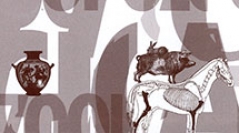

 Anthropozoologica
47 (1) - Pages 263-290
Anthropozoologica
47 (1) - Pages 263-290Authorities for this paper are principally the works by physicians, like Dioscorides, Aretaeus or Galen, and the books dealing with remedies in Pliny the Elder’s Natural History. Ancient medicine prescribed treatments including the adder, but snakes without specification were also much employed and many other snakes, venomous or not, were also used, but less frequently than the adder, according to Pliny. Physicians needed the whole animal or some parts of it, like sloughing, fat, flesh, and sometimes head and gall. Curiously, despite their preference for the adder, they often tried to eliminate the venom during the preparation or use of the remedies, the venom indeed not being seen in the same light as it is now. Diseases were cured by application of the principle of “Let like be cured by like” (snake bites, skin illnesses, etc.) and using specific powers ascribed to snakes (for example: good sight to cure eye problems). Except for incorporating adder flesh pastilles in theriac, snakes were not a basic ingredient of the Greek and Roman physicians’ pharmacopoeia, because there was an ambivalent attitude towards venom. Nevertheless, these animals seem to have been more frequently used in magic or in popular medicine, according to some texts by Pliny.
Adder, Antiquity, Galen, Leprosy, Medicine, Pharmacy, Pliny The Elder, Snake, Theriac, Venom.